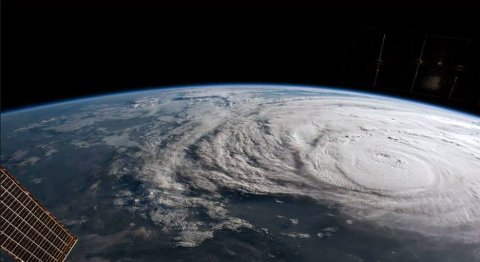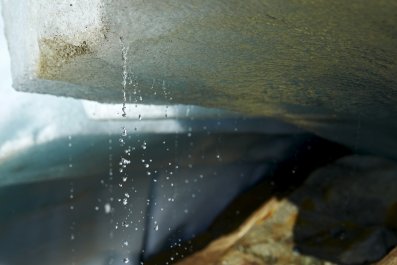A controversial plan to cool down the planet by artificially simulating volcanic eruptions could have disastrous consequences for Earth—yet there are no laws or regulations to stop any country or private company from deploying such technology.
Solar geoengineering is one of the proposed ways to artificially reduce global temperatures. It is often seen as one of the most extreme options—but also potentially one of the most effective. It involves injecting aerosols into the atmosphere. When the gas combines with oxygen, droplets of sulfuric acid form. These droplets reflect sunlight away, cooling the planet in the process. All good in theory, but the consequences of solar geoengineering are largely unknown.
In a study published in Nature Communications, scientists led by Anthony Jones, from the University of Exeter, U.K., have now examined what would happen if solar geoengineering was used in the Northern Hemisphere to try to prevent global warming and the extreme weather that goes with it—in this case tropical cyclones.

They found using this technology in the Northern Hemisphere would be a way to reduce the number of tropical cyclones hitting the U.S. and Caribbean. If deployed in the Southern Hemisphere, however, the number of cyclones in the north would increase.
Another devastating consequence of deploying solar geoengineering in the Northern Hemisphere is drought across the Sahel region of Africa. "(There is) this dichotomy where doing geoengineering in the north would benefit the U.S. but it would be disastrous for Africa," Jones told Newsweek. "Three of the four years with the worst drought in Africa were immediately preceded by volcanic eruptions in the Northern Hemisphere. So we see this effect from observations as well."
He said the idea of using this technology as a way of regionally altering climate is "extremely bad" as the entire climate system is linked—altering one will invariably have an impact on another. There is, however, a case for using solar geoengineering on a global scale.
In the Paris Agreement, nations from across the globe agreed to limit global warming by the end of the century to 1.5 degrees Celsius above pre-industrial levels. This target, however, is looking further and further out of reach—in the last few days, scientists announced carbon dioxide emissions are set to rise for the first time in three years, while President Donald Trump took to promoting coal at a climate change conference.

Jones says the technology could be used to "take the edge off" the temperature overshoot scientists are currently predicting. Solar geoengineering, he says, could be used while the world enhances its mitigation strategies.
But the study also highlights a far bigger problem with solar geoengineering and its complete lack of regulation. "There's nothing that could stop one country just doing it," Jones says. "It's actually relatively cheap technology. The technology exists to do it on a big scale, you only need about 100 aircraft with three flights per day. It would cost 1 billion to $10 billion per year.
"It's deeply disconcerting that we have this technology that could have such a massive influence on the climate, yet there's just no regulation to stop countries or even organizations from doing it. It could be a private thing. People haven't spoken about this," he said.
Jones adds that there is much about the climate system we do not understand yet, and there is far more work that will need to be done before solar geoengineering is deemed safe—if ever. These concerns must become part of the agenda—with global temperatures rising, time, he says, is ticking.
















